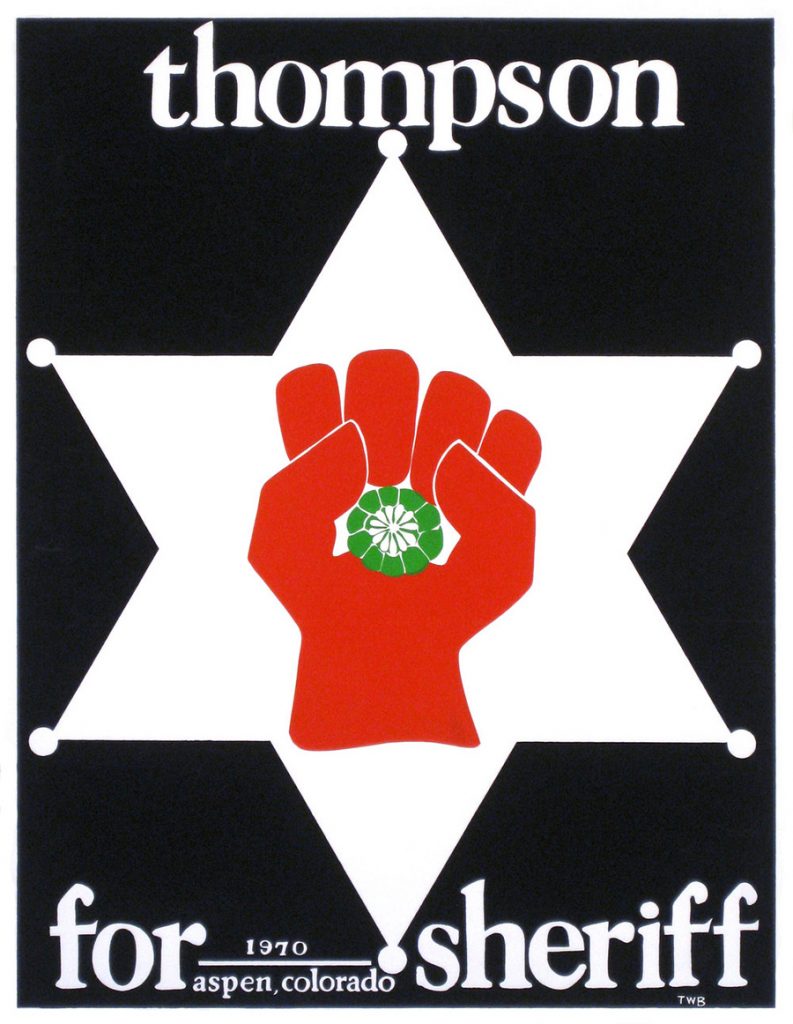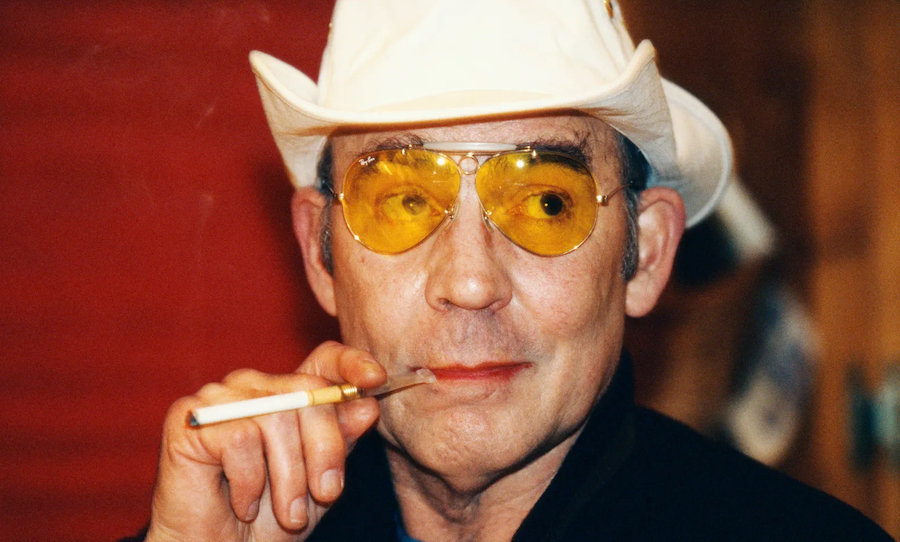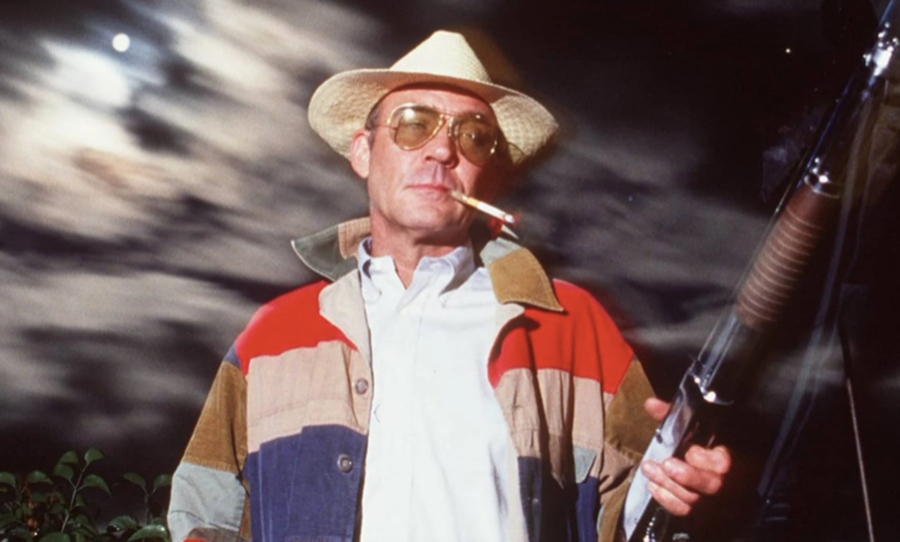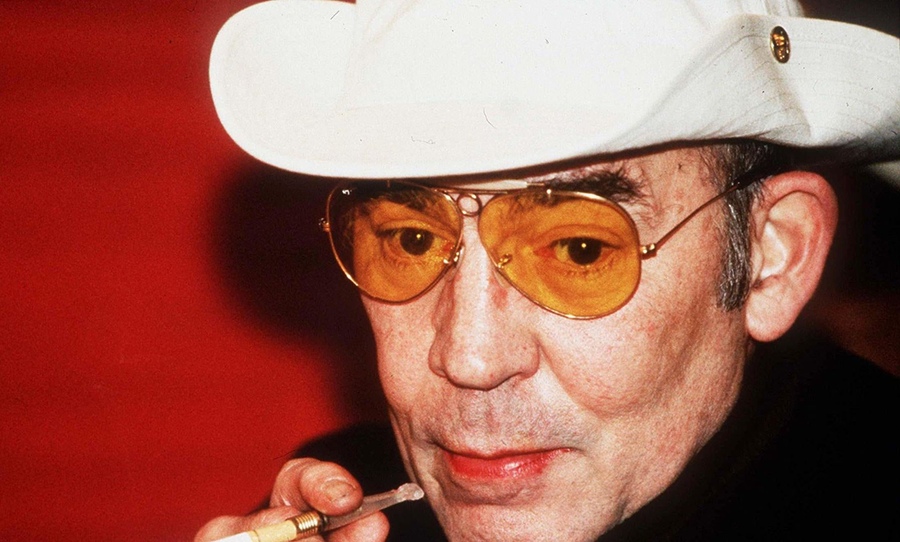“When the going gets weird, the weird turn professional”. Read on for a compilation of Hunter S. Thompson’s greatest hits.
“The Edge,” Hunter S. Thompson wrote in 1967’s Hell’s Angels: The Strange and Terrible Saga of the Outlaw Motorcycle Gangs, “there is no honest way to explain it because the only people who really know where it is are the ones who have gone over.”
Many have questioned whether or not Hunter S. Thompson ever really did go over “the edge,” but he sure came close. Before committing suicide in 2005, Thompson lived a truly bizarre life; one fuelled by drugs and insanity. He blurred the lines between reality and imagination; between fiction and journalism; between lucidity and hallucination.
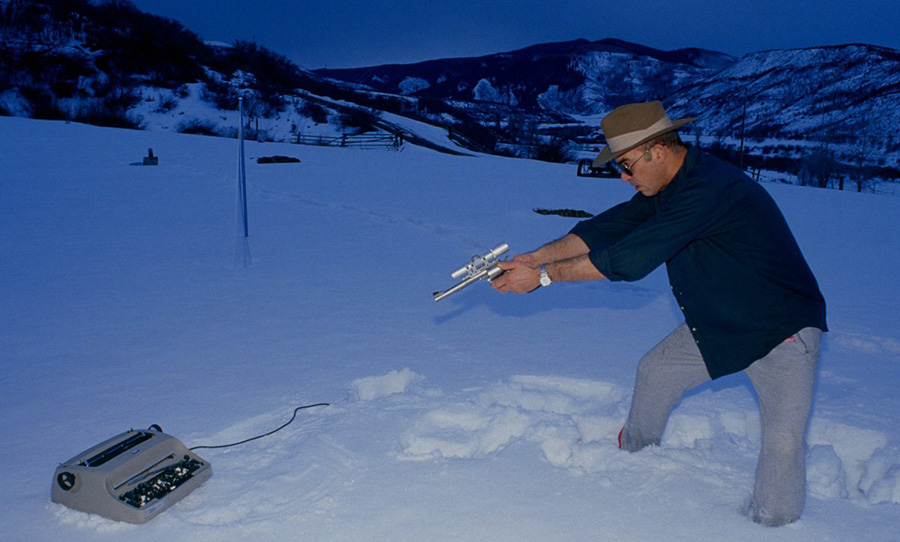
From running for sheriff (and almost getting elected) to getting beat up by motorcycle gangs, Thompson’s life is a treasure trove of wild stories. This article could be 5000 tales long, but we’ve selected five of our favourites from his weird and wonderful life.
Ed Muskie is addicted to Ibogaine!
In 1972, to the dismay of politicians and political reporters alike, Hunter S. Thompson was hired by Rolling Stone to cover the US presidential campaign trail. Although the second half of his book, Fear & Loathing on The Campaign Trail ’72, touches on Richard Nixon’s reelection, it primarily focuses on the Democratic primaries, following the respective campaigns of Ed Muskie, Hubert Humphrey, and George McGovern, among others. Years later, McGovern’s campaign manager, Frank Mankiewicz, called Thompson’s book “the least factual, most accurate account” recount of the election.
One such tale of less-than-factual reporting came when Thompson spread a rumour that Ed Muskie was hooked on an obscure root drug called Tabernanthe Iboga, or Ibogaine. It’s worth noting that before this rumour started gaining traction, Muskie was favoured to win the party’s nomination. His speeches, however, were notably boring and lifeless. So, Thompson took it upon himself to inject the campaign with a little action.
“Not much has been written about the Ibogaine Effect as a serious factor in the presidential campaign,” Thompson wrote, “word leaked out that some of Muskie’s top advisers called in a Brazilian doctor who was said to be treating the candidate with ‘some kind of strange drug’.”
Five years later, during an interview with CBC, Thompson admitted that the whole thing was a joke. “I couldn’t believe that people took this stuff seriously,” he said. “I never said he was [taking Ibogaine]… I said there was a rumour in Milwaukee that he was, which was true when I started the rumour in Milwaukee.”
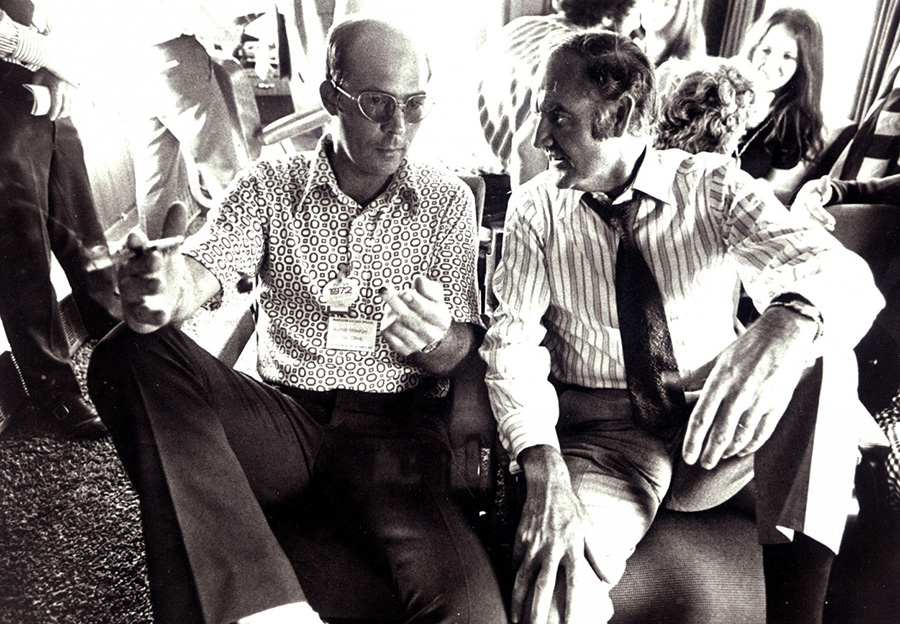
Hunter S. Thompson vs Floyd Watkins
As far as neighbourly feuds go, this is one of the all-time greats.
In 1985, multi-millionaire Floyd Watkins purchased Beaver Run Ranch in Woody Creek, Aspen, Colorado. Shortly after moving into the ranch, Watkins poured tonnes of concrete into nearby waterways, redirecting streams to create artificial trout farms. He also demanded that all local dirt roads be paved to prevent dust from blowing onto his property. These actions, understandably, upset many of his neighbours. He didn’t realise, however, that one of those neighbours was Hunter S. Thompson.
Later, when Watkins’ demands were denied, he claimed that he was powerful enough to have every member of the county board fired and replaced. This, of course, didn’t go down too well. Not long after, Watkins’ aforementioned trouts were all poisoned and the words “Fat Loyd’s Trout Farm” were spray-painted across his front gate.
The feud reached a fever-pitch when Watkins hired a gunman to patrol his property, guarding against vandalism. After hearing of Watkins’ new security measures, Thompson drove down to his ranch and fired bullets from three different guns at Beaver Run Ranch. Watkins proceeded to chase Thompson down, who was completely unrepentant about his actions. In fact, he suggested that more damage was on the way.
When Watkins attempted to press charges, Thompson said he was shooting in self-defence after being attacked by a porcupine. All charges were dropped.

“Only a punk beats his wife”
In the mid-1960s, when Thompson embedded himself in the operations of the Hell’s Angels motorcycle gang, it was only a matter of time before something went horribly wrong.
Thompson spent two years living and riding with the gang, researching his book, Hell’s Angels: The Strange and Terrible Saga of the Outlaw Motorcycle Gangs. Although he was largely terrified by them, he was ultimately accepted into the gang, and in his book provided a completely new look at the much-publicised group.
This all went pear-shaped, however, when Thompson caught Angels member “Junkie George” ferociously beating his wife and dog. Thompson attempted to intervene in the beating, telling George that “only a punk beats his wife and dog”. Following this comment, George and all the other Angels in attendance started wailing on Thompson, firing down on him with kicks and punches. One member even attempted to smash a rock over his head, which luckily missed. The incident put Thompson in hospital and brought his relationship with the gang to a gruesome close.
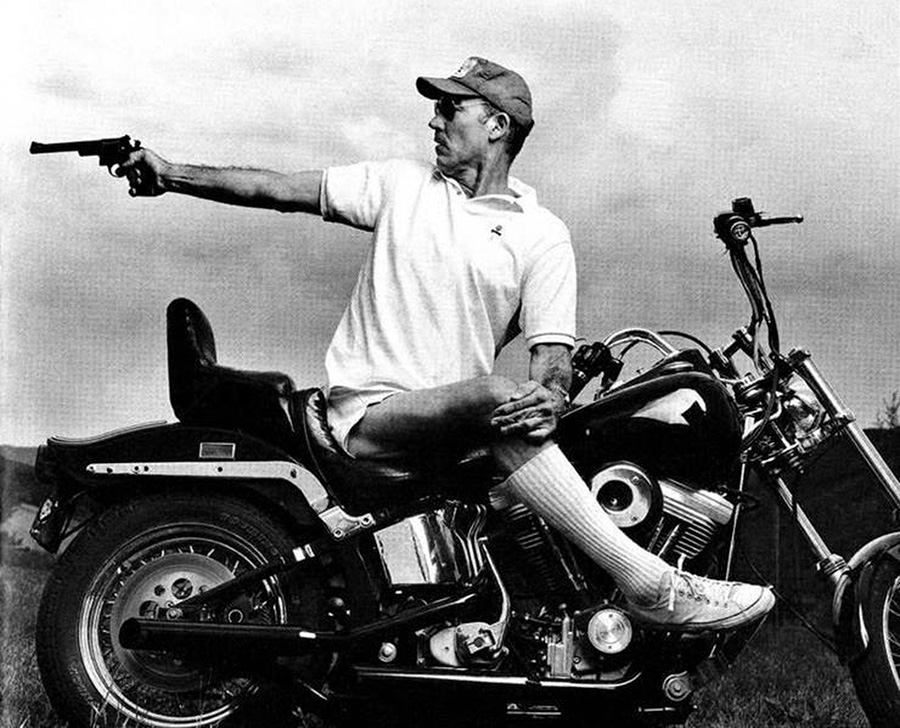
Where The Buffalo Roam
In 1980, after agreeing to play him in Art Linson’s Where The Buffalo Roam, Bill Murray spent a lot of time around Hunter S. Thompson. With two personalities this large, you can imagine the kind of debaucherous activities they got up to.
One night, after some excessive alcohol consumption, Murray and Thompson found themselves attempting to pull off a series of Houdini-style escapes. The game was taken to another level when Thompson duct-taped Murray to a chair and pushed him into a swimming pool. Thompson, full of booze (and probably other things), was convinced that Murray would be able to pull off the escape, leaving him at the bottom of the pool for an extended period of time.
It soon became clear that Murray could not pull off the escape, and was, funnily enough, drowning.
Luckily, Thompson quickly realised this and launched into the pool, rescuing Murray just in the knick of time.
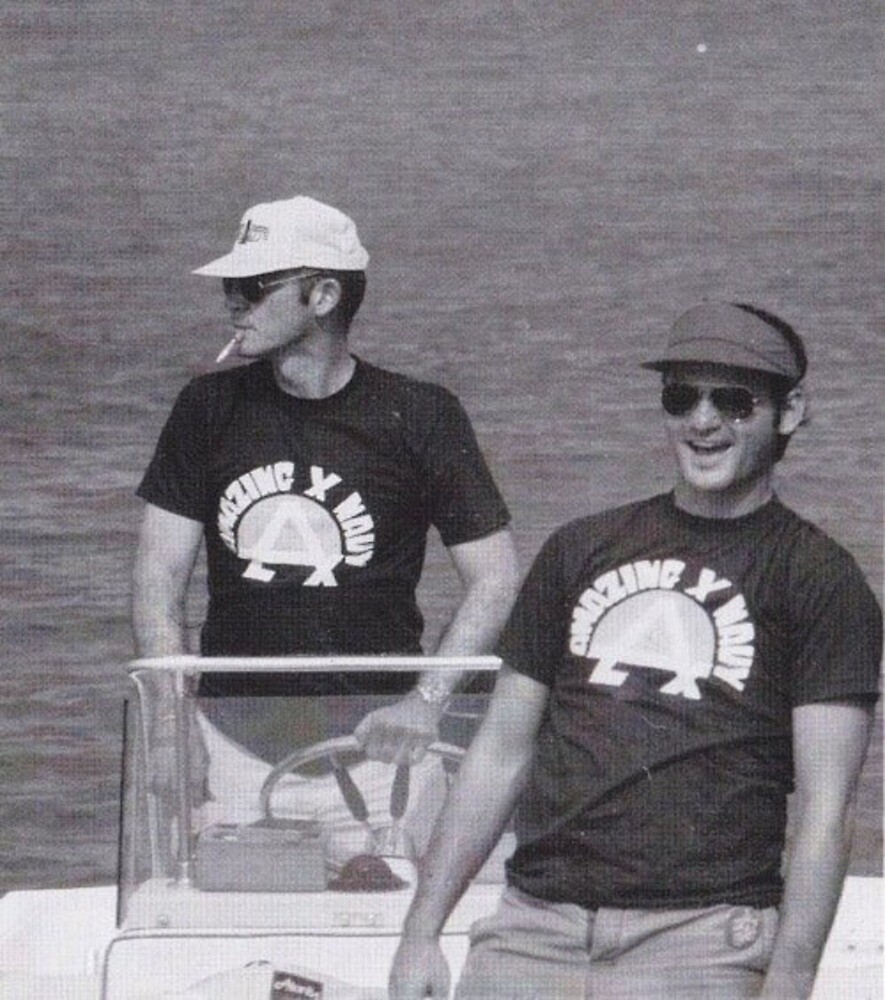
The Battle Of Aspen
Thompson’s campaign to become the sheriff of Aspen and Pitkin County is the quintessential Hunter S. Thompson story.
Following the release of his 1966 Hell’s Angels book, Thompson purchased Owl Farm in Woody Creek, Colorado. Around the time, hippies from across the country were relocating to the area in pursuit of a quieter life. By the time 1969 rolled around, Aspen and the surrounding Pitkin County had become a mecca for the countercultural movement.
“Why not challenge the establishment with a candidate they’ve never heard of?” Thompson asked in a 1969 Rolling Stone article titled Freak Power In The Rockies. “Why not run an honest freak and turn him loose, on their turf, to show up all the normal candidates for the worthless losers they are and always have been?”
This “honest freak” was Joe Edwards, a 29-year-old lawyer who had amassed favour in the town after defending a group of hippies arrested for “vagrancy”.
After it appeared that Edwards might actually become mayor, Thompson hatched the idea to enter himself in the race for sheriff.
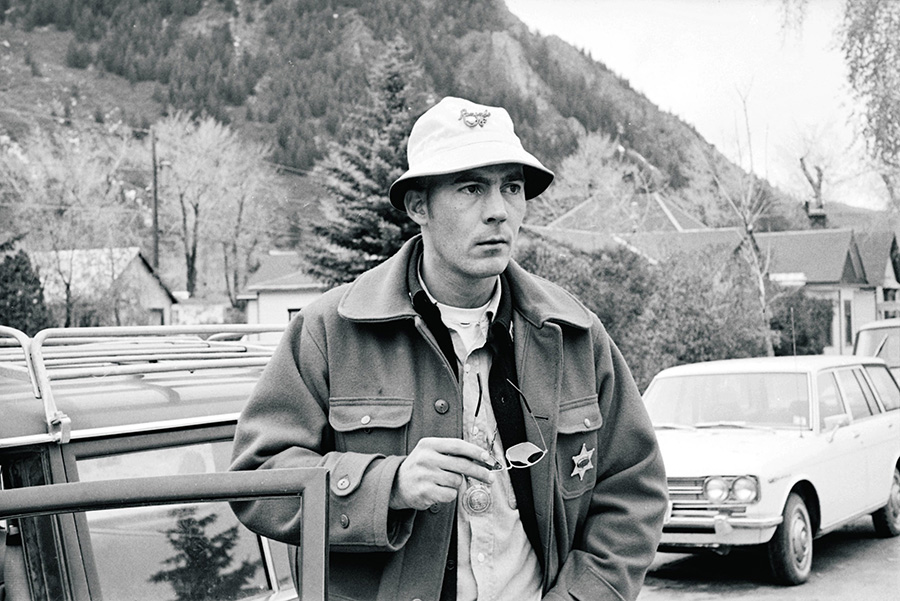
Edwards would ultimately lose his campaign by six votes, but Thompson’s campaign would continue.
Among other controversial proposals, Thompson campaigned for the town to be renamed ‘Fat City’, with the intention of deterring “greedheads, land-rapers, and other human jackals from capitalizing on the name Aspen.”
He also campaigned for all drug dealers to be locked in stocks on the local courthouse lawn, because, in his words, “no drug worth taking should be sold for money”.
Thompson lost the election by a mere 31 votes.
